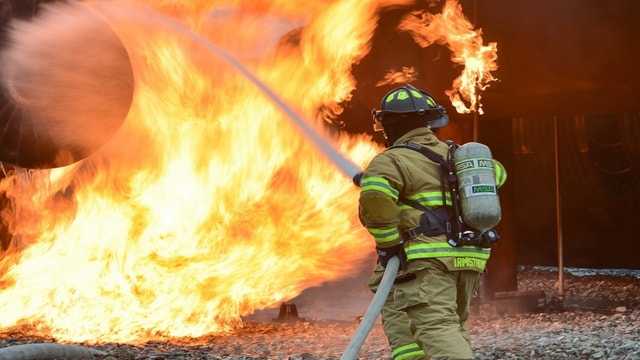
Millions of workers in the developing nations spend their days churning out garments in the sewing factories for the consumers across the globe. Few of them are aware that they have put their lives at risk due to poor working conditions. For these workers in the factories, the most important thing should be their assured safety from hazards. However, despite all talks, the safety standards have not improved in the sewing factories. Below are excerpts from an interview with Sukesh Ray, CEO, Lightbreeze Technologies and Systems, Bangladesh , who is not only providing consultancy against fire but is also supplying the requisite tools and safeguards for the same in the apparel industry.
Global apparel industry nowadays is all about cost-competitiveness and Bangladesh is no exception. The garment industry in the country is characterized by fast production, relying on cheap labour and low production costs to compete with its competitors. In the highly competitive garment manufacturing industry, where the international buyers on one hand are raising the bar in terms of expectation and on the other hand, are putting pressure on the manufacturers to reduce the cost of garments, it has become critical for the apparel manufacturers in Bangladesh to upscale their safety standards to stay relevant. This is one of the main challenges due to which the fire and safety practices have not blossomed in the country.
However, where high death toll from fire incidents reflects not only substandard buildings but also poor emergency procedures, inadequate and blocked fire exits and overcrowded workplaces, garment manufacturers cannot simply get away by blaming anyone but themselves for the disastrous fire safety standards.

There is a famous saying – Fire destruction is one man’s job, fire prevention is everybody’s job. But is everybody contributing their part in laying a strong foundation for fire safety standards in the Bangladesh’ garment industry?
Factories are running operations in more floors than allocated
“Many factories, which I have visited, continue their operations during both day and night in order to meet the production targets. The establishment of factories or the conversions of residential or commercial buildings into garment factories has often been done as quickly and as cheaply as possible, which results in widespread safety problems including faulty electrical circuits, unsafe buildings, inadequate emergency exits and inefficient firefighting equipment.”
Many RMG factories fail to follow even the most basic standards of safety issues because of the fact that the factories have led to the conversion of many buildings, built for other purposes, to be ultimately used as garment factories. These are often built without the required permits and standards from the concerned authorities. A number of factories have constructed unauthorized floors or have increased the workforce and machinery beyond the safe capacity of the building ignoring all the safety aspects.
Fire extinguishers are inadequate and are not found during fire
“There are such factories also which apply approved stickers on the empty fire extinguishers just to pass the audits and cut the cost.”
The infamous fire accident at Tazreen Fashions (Dhaka) in November 2012, has brought out the hidden issue of the unsafe practices being followed by the garment manufacturers. The inadequate number of fire extinguishers is one of the major unsafe practices. A fire extinguisher should be provided for each 3,000 sq. feet of the protected building area. Upon investigation, it was found that the factory was not following the standard and when the fire broke out, lack of fire extinguishers contributed heavily leading to more than 112 deaths.
|
Fire Occurrence & Impact Scenario (Bangladesh)* |
|
Name of Company |
Date of Occurrence |
Causes of Occurrence |
Total Workers |
Deaths |
Injured |
Jobless |
Total Loss of the Company (Approximate) |
|
Tazreen Fashion |
24-Nov-12 |
The fire, presumably caused by a short circuit |
1400 |
111 |
300 |
700 |
US $ 68 million |
|
Smart Fashion Export Factory |
26-Jan-13 |
There was a tire repair and welding workshop downstairs, so officials say that the fire could have started from this point |
450 |
10 |
35 |
400 |
US $ 15 million |
|
Tung Hai Sweaters Ltd. |
8-May-13 |
The fire, presumably caused by a short circuit |
2700 |
8 |
3 |
0 |
US $ 24 million |
|
Aswad Composite Mills Limited |
8-Oct-13 |
The cause of the blaze was not known |
2550 |
10 |
50 |
2000 |
US $ 26.9 million |
|
Standard Group |
29-Nov-13 |
Sabotage |
25000 |
0 |
0 |
20000 |
US $ 23 million |
|
Mega Yarn Dyeing Mills Limited |
28-Sep-13 |
The fire, presumably caused by a short circuit |
500 |
1 |
4 |
0 |
US $ 7.56 million |
|
Total |
|
32,600 |
140 |
392 |
23,100 |
US $ 164 million |
|
*Data is extracted from Loss and Damage Assessment in the Context of Fire Hazards: A Study on Selected Garment Factories in Bangladesh by Md. Mizanuzzaman, University of Dhaka, Bangladesh |
Fire Occurrence & Impact Scenario (Bangladesh)*
Raw material is kept in close proximity to the fire accident-prone area
“It is another life-threatening practice being followed by the companies, shockingly, the top management does not step up to improve the situation even after getting reminded multiple times by us during factory audits.”
In most of the factories, it is observed that the raw material in a garment unit is kept in close proximity to the place which is already an accident prone area due to nearby electric panels. In case of short circuit, the fabric tends to catch fire quickly and dodging all efforts, fire takes place and becomes dangerous in no time.
Workers’ density is more than what is prescribed in standards
“I visited a factory named National Apparel few months ago. I asked them how many workers will work in the factory before I start designing and commissioning the fire safety plan for that factory. They did not tell us. Without knowing the number of workers, nobody can provide a proper fire safety plan.”
One of the key parameters of building construction is the number of workers that would work there. However, that’s not the case in Bangladesh. Already running production in unauthorized buildings, the factories are packed with countless people and 80% of them are women. Also, there is lack of fire exit which toughens the situation in case of emergencies. So when fire breaks out, there are high chances of stampede and, naturally, being slow in reflexes than men, the women workers suffer more.
No dedicated staff is appointed to ensure proper implementation of fire and safety standards
“This practice is unsafe and is mostly being followed by comparatively low-level garment groups in Bangladesh. I have audited more than 100 such factories and found out that they do not have concern about the health and the environment. Whoever is involved in fire safety, they only know how to operate the hose, how to operate pumps and how to look into the detection system. They are not aware about the proper auditing system to detect what kind of incident can take place in the factory.”
A team of ‘aware’, ‘observant’ and ‘educated’ employees is the best bet for preventing fire accidents in the workplace and the primary responsibility of the team is to train all employees within the factory to inculcate a sense of responsibility and awareness among them. However, Bangladesh seems to be ignorant about this fact. A large number of factories don’t have proper HES (Health, Environment and Safety) training programme which is mandatory to be conducted. Due to the lack of a dedicated person, daily reporting system and internal audit are not being monitored and that’s one major reason for dearth in near-missing preventive plans or actions.
Fire-drills are just formality
“Drills should be conducted confidentially without bringing it to anyone’s notice. The safety officer is afraid if, without information, drills are conducted, stampede will occur and it might create a panic situation. But then this is the reason why training programmes are always there using which one can educate and aware the workforce.”
One of the most important aspects of a professional fire safety training programme is to conduct fire-drills in regular sessions. It helps employees to be aware of the exit procedures, and what to do in case of an accident. Bangladesh, being a labour-intensive garment industry, has its own reasons for fire-drills not taking place effectively. In most of the factories, the fire and safety officer already informs the employees before the fire-drills happen. This is of no use.
If problems are there, solutions also exist
Following the unfortunate incidents such as fire in Tazreen Fashion and Rana Plaza collapse, various organizations including the Bangladesh Accord on Fire and Building Safety, the Alliance for Bangladesh Worker Safety and National Plan of Action (NPA) have been formed to improve building and fire safety of Bangladesh’s garment industry. These organizations are working extensively to improve safety standards in Bangladesh. The autonomous bodies like BGMEA and BKMEA are also planning not to give membership until and unless the factory is fully compliant on Civil, Electrical and Fire safety standards.
However, Bangladesh needs to come up with a robust roadmap in order to improve the health and safety standards in the country. Change in the mindset of the mid to low-level factories is a must. There is an urgent need for appointing a fire marshal department whose role would only be to monitor and examine if the evacuation procedures are being followed correctly in the garment factories across Bangladesh. “Formation of zonal-wise teams in Dhaka and Chittagong would contribute significantly in the efforts towards improving the fire-safety plans,” suggests Sukesh.

Post a Comment